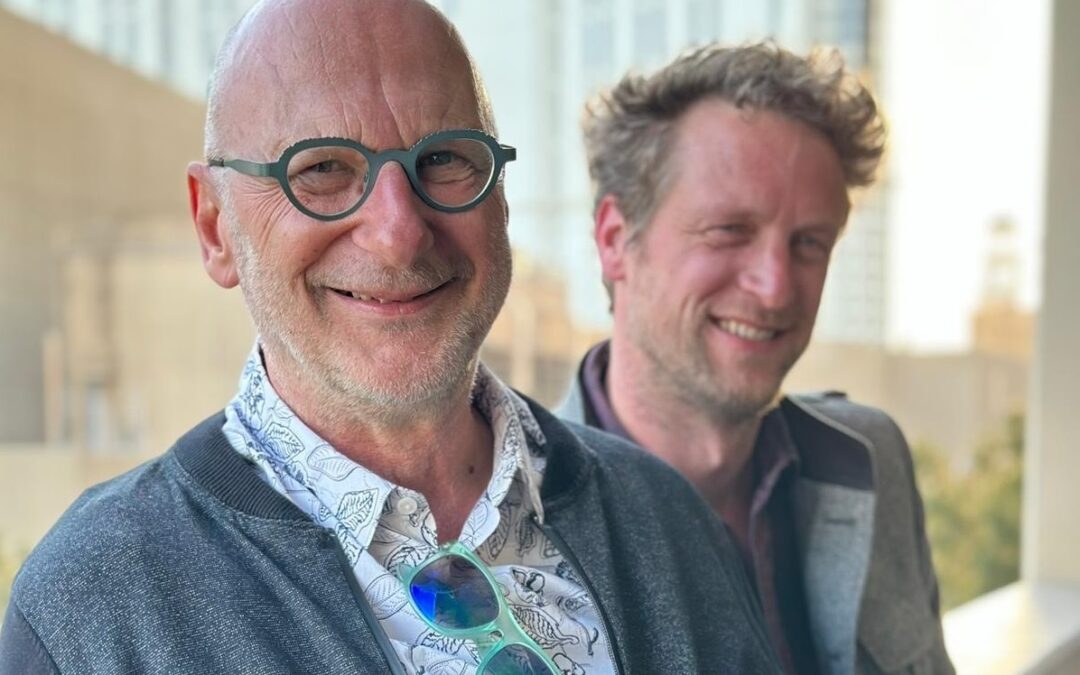Should you treat a couple when violence is involved? And how can you ensure the violence stops? On the occasion of their latest book publication, Flemish EFT trainers Lieven Migerode and Jef Slootmaeckers are conducting a workshop at the EFT World Summit on managing violence in relationships.
“For a long time, the dominant model was that violence in relationships stemmed from a desire for power, particularly over women. That’s an interesting view, but it doesn’t prove very helpful in practice,” says Lieven Migerode, a certified EFT therapist in Leuven with 40 years of experience working with couples. Meanwhile, research has shown that both men and women exhibit aggression in relationships, and violence is equally common in same-sex couples.
This old model also didn’t align with Lieven and his colleague Jef Slootmaeckers’ observations in their practice. When Lieven inquired about the resolution of arguments, he noticed many couples’ reluctance to address violence. “One of the two would then mumble ‘by force’ and immediately ask ‘Can we still come back?’” For a long time, treating couples when partner violence was present was considered taboo. “I sensed a need for people to be allowed to be in therapy together for their relationship. It was clear that partners wanted to continue seeing each other and wanted the violence to stop.”
Cold and hot
Sue Johnson, the creator of EFT, endorses Michael P. Johnson’s distinction between “cold” and “hot” violence. Cold violence is coercive, lacking a reciprocal attachment relationship, while hot violence stems from attachment needs, often seen in couples seeking treatment. “So, it doesn’t have to be physically safe before therapy can start, but more emotional safety needs to be established in therapy so that physical safety can also develop. EFT helps people take responsibility for their needs. They learn to recognize that their swearing is a cry for attention, or that they clam up when they feel overwhelmed.”
But should you make prior arrangements with a couple when violence is involved? For instance, if children are being abused or if one of them has ended up in the hospital. “Patients often don’t disclose the violence; they feel ashamed. Only when we welcome the couple, including the violence, does this shame dissipate, making it easier for them to share their pain with us therapists. It’s truly courageous when people dare to share. Couples sense how you address conflict, how understanding the therapist is about violence. If you can empathize with their suffering, people open up.” Only then, he argues, can the work toward emotional and physical safety commence.
Iceberg
The couple themselves want nothing more than for the violence to stop, he notes. “They come to me because they want to find each other again. I see the violence as the tip of the iceberg; beneath the surface lies the bonding.” Especially when children are involved, there is a tendency to focus solely on the tip of the iceberg. Our brain fixates on danger. “But the key is to recognize the attachment drama beneath the surface and not to remain fixated on the visible violence.”
To address the attachment drama, as a therapist, you must thaw the iceberg with warmth. “These people live in a world where everyone has an opinion about them and wants to break the couple up. They become increasingly isolated.” As a therapist, he stands on the side of hope. Moral judgment is for others, Lieven argues. That’s the role of agencies like youth welfare, the police, and the judiciary. “Everyone has their role.”
Sling
Just a few weeks ago, a couple arrived, with one arm in a sling after he had slapped her. Lieven had to be very careful with his facial expressions, avoiding any hint of disapproval. “The man was deeply ashamed; even the slightest condemnation would have been noticeable. She wasn’t ready to leave yet, although she expressed doubts. In that sense, she also felt safe during the session, with space to openly express her uncertainty.”
Statistics show that couples in violent relationships are twice as likely to break up. “It’s equally important for them to understand why they’re breaking up. Sometimes, the greatest danger arises when panic sets in that the bond is broken.”
Flooded
It’s not about a wrong or dominant partner causing the violence; it stems from attachment issues. “The dynamic is similar to other couples, just more intense due to deep childhood wounds. They ask themselves: Who’s there for me? What’s wrong with me, am I not good enough?” Finding each other, they feel understood by someone struggling with similar trauma.
However, when cracks appear later in the relationship, they lack emotional tools to address them. “They fear losing everything, so they cling to each other or become emotionally overwhelmed. Past defenses resurface.” Research shows that in 60% of cases, both partners become physical, though the perpetrator is responsible. Violence occurs within a known cycle, not in isolation.
Slow down
To apply EFT in relationships affected by violence, Lieven suggests an intensified approach: welcoming the couple extensively, validating them, and slowing them down when they approach their tolerance limit. By intervening and expressing his own reactions, he encourages reflection and coherence. However, therapists also have their limits; if they struggle to empathize or maintain a therapeutic relationship, it’s professional to refer the couple elsewhere. Moreover, the intensity of this work requires careful self-care and balance. Lieven Migerode and Jef Slootmaeckers will speak at the EFT World Summit on June 3rd and 4th in Haarlem, presenting their latest book “Fighting for Love,” which explores EFT in partner violence.
